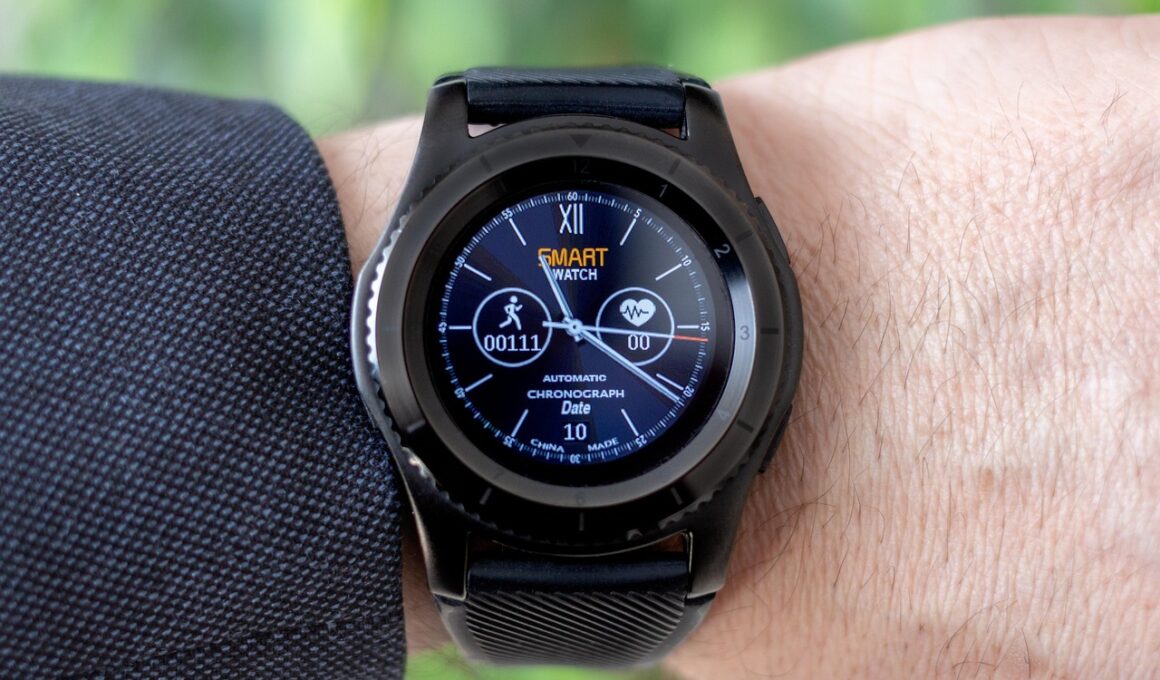Tracking Heart Rate During Home Circuit Training Workouts
Heart rate monitoring is essential for enhancing the effectiveness of home circuit training workouts. By tracking heart rate, you can ensure that your workouts are intense enough to provide benefits like improved cardiovascular fitness and fat loss. Many athletes and fitness enthusiasts use either wearable tech or mobile applications to monitor their heart rate. These tools not only boost motivation by providing real-time feedback but also help to track progress over time. Aim to exercise within 60-85% of your maximum heart rate, which represents the optimal training zone for most individuals. Understanding your personal maximum heart rate, often calculated as 220 minus your age, aids in maintaining appropriate intensity. Moreover, heart rate data can assist in fine-tuning your workout routines and informing future choices based on set goals. Before you begin your home circuit training, spend a few moments familiarizing yourself with various heart rate zones and how they relate to the exercises you plan to engage in. Set SMART (Specific, Measurable, Achievable, Relevant, Time-bound) goals to get the most out of both your heart rate monitoring and training sessions.
Effective circuit training primarily consists of alternating exercises that engage different muscle groups, typically targeting both strength and endurance. Being aware of your heart rate while performing these routines enhances overall effectiveness. When you perform exercises that significantly elevate your heart rate, such as jump squats or burpees, tracking metrics quickly informs you when to adjust intensity. If your heart rate is not reaching your target zone, consider modifying the duration or intensity of certain exercises. Conversely, if you exceed your target heart rate, it may signal that you need to slow down your pace or take a brief rest period. Monitoring heart rates also helps prevent overtraining, which can lead to injuries. Consider incorporating circuit style training that combines both aerobic and anaerobic exercises for optimal conditioning. Research suggests that shorter rest intervals keep the heart rate elevated, promoting calorie burn. In addition, cross-training provides a dynamic approach that mitigates boredom and keeps your workouts engaging. Utilize both timed and rep-based formats to keep track of intensity levels throughout the circuit, ensuring that various muscle groups are activated efficiently and safely.
Benefits of Heart Rate Monitoring in Circuit Training
Using heart rate monitoring during home workouts can prove extremely beneficial in achieving fitness goals. Firstly, it helps in assessing cardiovascular improvement over time, revealing how your body adjusts to increased workouts. Secondly, heart rate data allows for better management of workout intensity levels, which directly influences performance. A heart rate monitor can signal when to increase effort or take necessary breaks, promoting a balanced training regimen. Additionally, understanding your heart rate trends helps to identify areas needing focus, such as insufficient warm-ups or high-intensity intervals. Effective tracking can also enhance motivation levels; seeing your heart progress builds confidence and reinforces commitment. It often leads individuals to push their limits in a safe manner. Furthermore, tracking heart rates can accommodate various fitness levels. Beginners can steadily acclimate their bodies, while advanced trainers can set new performance metrics and tests. Setting new personal records becomes achievable when monitored progress is analyzed. Lastly, heart rate monitoring is a critical factor in ensuring safety during intensive training exercises, enabling you to listen to your body and respond appropriately when fatigue arises.
The role of technology in tracking heart rates during circuit training workouts cannot be overlooked. Wearable fitness trackers and smartwatches are increasingly popular, providing instant feedback and insightful data on heart rates. These devices can be synced to mobile applications that store historical data, facilitating long-term trend analysis. Many advanced models feature heart rate variability monitoring, which provides insights into stress levels and potential fatigue. Regularly analyzing this data empowers users to make informed adjustments to their training programs for better results. While many athletes favor wrist-based monitors, chest straps provide even more precise data. If you’re serious about tracking your heart rate, investing in a quality heart rate monitor could take your training to the next level. Ensure its compatibility with other fitness apps to enhance user experience. It’s essential also to understand how external factors influence heart rates, including hydration levels and fatigue from previous workouts. Technical support from product manufacturers can often aid in using devices to their fullest potential, so don’t hesitate to reach out for help. The integration of technology fosters a more adaptive approach to training, enabling improved performance.
Common Mistakes When Tracking Heart Rate
Even with the best intentions, several common mistakes can hinder the effectiveness of heart rate tracking during circuit training. One prevalent mistake is relying solely on average heart rate data instead of also focusing on heart rate variability. This oversight can lead to inaccurate assessments of recovery and overall fitness. Another misstep involves not adjusting your training based on collected data; this lack of response to your heart rate can hinder progress. Furthermore, neglecting to calibrate your devices or not ensuring proper fit can lead to inconsistent readings. It’s advisable to familiarize yourself with the functionality of your heart rate monitoring device to maximize its capabilities. Additionally, many underestimate the importance of rest days; consistent high heart rates may indicate fatigue, necessitating recovery periods. Remember that hydration, nutrition, and mental status also influence heart rates and should be monitored in conjunction with your exercise regimen. Connecting with a trainer who is knowledgeable about heart rate zones may help optimize your circuit training sessions and enhance your overall experience. Listening to both technology and your body can significantly lead to improved progress.
Another essential consideration when tracking heart rate during circuit training is the importance of warm-ups and cool-downs. Neglecting these components could impact your heart rate readings significantly. A proper warm-up prepares your muscles and cardiovascular system for increased workload, thus reducing injury risks. Incorporating dynamic stretches before diving into high-intensity circuits promotes blood flow and can lead to more accurate heart rate data. Likewise, cooling down facilitates recovery and aids in gradually lowering the heart rate, allowing your body to transition back to rest. Ensure to include both high-intensity and cooldown movements in your circuit training structure. This careful balance promotes not only target heart rate efforts but also contributes to overall training effectiveness. Furthermore, documenting warm-up and cool-down durations alongside peak heart rates can enable more customized future training protocols. This includes maximizing effectiveness during circuits and preventing potential injury signs arising from abrupt changes in heart operation. Remember to listen to your body; modifying your sessions based on its responses can promote better heart health. In essence, structured warm-ups and cool-downs play integral roles in achieving targeted heart rates safely during workouts.
Conclusion: Optimizing Your Home Circuit Training
In conclusion, monitoring your heart rate during home circuit training workouts offers numerous advantages. Personalized feedback from heart rate data can enhance routine effectiveness, enabling you to meet and surpass fitness goals effectively. The integration of technology determines real-time responses, helping tailor training intensity levels. By making informed decisions about workout regimes, avoiding common errors, and implementing effective warm-up and cool-down techniques, optimal performance is achievable. Always be vigilant about your heart rate data; adjustments based on trends can significantly maximize training benefits. This dedication fosters safety while pushing individual comfort zones during exercises. Tracking your heart rate not only improves understanding of your limits but also helps highlight areas of development. Utilizing that knowledge aids in creating a more enjoyable workout experience. As a result, consider mapping progression in fitness goals alongside heart rate data. Consistent effort will yield impressive results as you become more in tune with your physical self. Embrace heart rate monitoring as an essential tool, ensuring your home circuit training remains both productive and enjoyable. The journey towards fitness mastery awaits as you prioritize heart rate awareness in your exercise routines.
Educating yourself about the fundamentals of heart rate monitoring elevates your home circuit training experience. Wise utilization of tools, strategies, and monitoring techniques ensures maximum gains from every workout session.


